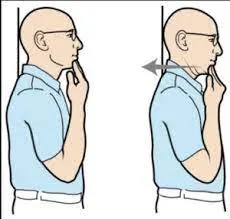Temporomandibular Joint Disorder (TMJ) can be a painful and frustrating condition, affecting millions of people worldwide. It’s characterized by symptoms like jaw pain, clicking or popping sounds, and difficulty with chewing and speaking. While there are various approaches to managing TMJ, one often overlooked but highly effective option is TMJ physiotherapy. In this blog, we’ll explore what TMJ is, how it can impact your life, and how physiotherapy can offer much-needed relief.
Contents
Understanding Temporomandibular Joint Disorder
Temporomandibular Joint Disorder, commonly referred to as TMJ disorder or TMD, is a complex and often painful condition that affects the temporomandibular joint, which connects the jawbone to the skull. This joint is crucial for everyday activities such as talking, chewing, and even facial expressions. When problems arise within or around the TMJ, it can result in a range of symptoms and discomfort, collectively known as TMJ disorder.
The exact causes of TMJ disorder can include factors such as jaw injury, dental problems such as misalignment or malocclusion, teeth grinding (bruxism), stress, arthritis, or even genetics. TMJ disorder is characterized by a variety of symptoms, with jaw pain being one of the most common. Individuals with TMJ disorder may experience discomfort or tenderness in and around the jaw joint, which can radiate to the face, neck, and shoulders. Other hallmark symptoms include clicking or popping sounds when opening or closing the mouth, headaches, earaches, and limited jaw mobility.
The symptoms of TMJ disorders can range from mild to severe. In some cases, individuals may have difficulty with basic jaw movements. These may include fully opening their mouth or moving it from side to side. The pain and discomfort associated with TMJ disorder can significantly impact one’s quality of life, affecting their ability to eat, speak, and engage in daily activities comfortably.
Treatments For Temporomandibular Joint (TMJ) Disorder
Treatment for Temporomandibular Joint (TMJ) disorder is often tailored to the individual’s specific symptoms and the underlying causes of their condition. Here are common approaches to managing TMJ disorder:
- Medications: Over-the-counter pain relievers such as acetaminophen or ibuprofen can help manage pain and reduce inflammation. Muscle relaxants prescribed by a healthcare provider can help alleviate muscle tension and pain in the jaw.
- Dental Treatments: Dental splints or mouthguards can help reduce teeth grinding (bruxism) and alleviate TMJ symptoms by repositioning the jaw. In cases where misaligned teeth contribute to TMJ disorder, orthodontic interventions such as braces or aligners may be recommended. If an uneven bite is contributing to TMJ disorder, bite adjustment procedures can help correct the alignment.
- Physical Therapy: TMJ-specific physical therapy involves exercises, stretches, and manual techniques to improve jaw mobility, strengthen muscles, and reduce pain. It may also include ultrasound or electrical stimulation.
- Trigger Point Injections: In cases of severe muscle pain, a healthcare provider may administer injections of local anesthetics or corticosteroids to specific trigger points in the jaw muscles thus relieving pain and reducing muscle tension.
- Prescription Medications: In some instances, healthcare providers may prescribe stronger medications, such as muscle relaxants or tricyclic antidepressants, to manage TMJ symptoms.
- Alternative Therapies: Techniques like acupuncture, chiropractic care, or biofeedback may be explored for symptom relief, although their effectiveness can vary from person to person.
- Surgery: In rare cases when conservative treatments are ineffective, surgery may be considered. Procedures like arthrocentesis (joint flushing), arthroscopy, or open joint surgery may be performed to address structural issues within the TMJ.
Can Physiotherapy Help With TMJ Disorder?
Physical therapy can be a valuable and effective treatment option for individuals with Temporomandibular Joint (TMJ) disorder. TMJ-specific physiotherapy focuses on addressing the underlying causes and symptoms of TMJ disorder, aiming to alleviate pain, improve jaw function, and enhance the overall quality of life.
Pain Management
Physical therapists use hands-on techniques to alleviate pain and muscle tension in the jaw, neck, and shoulders. These techniques may include massage, myofascial release, and joint mobilizations. Therapeutic modalities such as heat, cold, ultrasound, and electrical stimulation can be used to reduce pain and inflammation in the TMJ area.
Stretching and Range of Motion Exercises
Physical therapists design exercises in order to improve the range of motion in the jaw joint. Gentle stretching exercises can help individuals regain normal jaw movement.
Strengthening Exercises
Weakness in the muscles that control jaw movement can contribute to TMJ disorders. Physical therapists prescribe exercises to strengthen these muscles, therefore, improving jaw stability and function.
Posture and Body Mechanics
TMJ disorders can be influenced by poor posture and improper body mechanics. Physical therapists educate patients on maintaining good posture and using proper techniques for activities that involve jaw movement.
Relaxation Techniques
Stress and tension can exacerbate TMJ symptoms. Physical therapists teach relaxation techniques, such as mindfulness and stress management, to reduce muscle tension and stress-related jaw clenching.
Education
Physical therapists provide education on topics such as TMJ anatomy, the causes of TMD, and strategies for symptom management.
Customized Treatment Plans
Every individual with TMJ disorder is unique, and that is why physical therapists develop personalized treatment plans tailored to the specific needs and symptoms of each patient.
Collaborative Care
Physical therapists often work in collaboration with dentists, oral surgeons, and other healthcare providers so as to ensure comprehensive care for TMJ disorders.
Home Exercise Programs
Physical therapists provide patients with home exercise programs that allow them to continue their rehabilitation independently between therapy sessions.
At-Home Exercises For TMJ Disorder Management
Managing TMJ (Temporomandibular Joint) disorder often involves a combination of professional treatments and self-care strategies. At-home exercises can complement professional interventions and also help alleviate symptoms. Here are some simple exercises that you can do at home to manage TMJ disorder:
Jaw Relaxation Exercise
- Sit or stand in a relaxed position.
- Place your tongue on the roof of your mouth, just behind your front teeth.
- Then open your mouth as wide as is comfortable without causing pain.
- Hold this position for a few seconds.
- Then slowly close your mouth and relax your jaw muscles.
- Repeat this exercise several times, gradually increasing the range of motion.
Jaw Stretch
- Open your mouth as wide as possible without causing pain.
- Then place your thumb on your lower front teeth and your index finger on your upper front teeth to create resistance.
- Now, hold this position for a few seconds.
- Slowly release and relax your jaw.
- Repeat this stretch a few times.
Chin Tucks
- Sit or stand with your back straight.
- Gently tuck your chin toward your chest, creating a double chin.
- Hold this position for a few seconds.
- After that slowly return your head to a neutral position.
- Repeat this exercise several times.
Tongue-to-Palate Exercise
- With your mouth closed, place your tongue on the roof of your mouth, just behind your front teeth.
- Maintain this tongue position as you slowly open and close your mouth.
- Then, repeat this exercise several times, ensuring your tongue remains in contact with the palate throughout.
Resistance Exercises
- First, place your fist under your chin with your mouth closed.
- Then apply gentle, upward resistance with your fist as you try to open your mouth.
- Hold this position for a few seconds, then relax.
- Repeat this exercise a few times.
Neck and Shoulder Relaxation
- Relax your neck and shoulders by gently tilting your head from side to side and rolling your shoulders.
- Perform slow and controlled movements to release tension in these areas.
Prevention and Long-Term Management of TMJ
Long-term management of TMJ disorders is essential for maintaining a good quality of life and minimizing the recurrence of symptoms. Here are some long-term management strategies to consider:
- Regular Dental Check-Ups: Schedule regular dental check-ups with a dentist who has experience in treating TMJ disorders. Monitoring your dental health can help identify any issues early and ensure that your bite and jaw alignment are stable.
- Follow a Soft Diet: Continue to avoid hard, chewy, or crunchy foods that can exacerbate TMJ symptoms. Opt for a diet that includes softer foods in order to reduce strain on the jaw joint.
- Stress Management: Stress is a common trigger for TMJ symptoms. Practice stress-reduction techniques such as relaxation exercises, meditation, yoga, or mindfulness to minimize teeth clenching and jaw tension.
- Maintain Good Posture: Pay attention to your posture, both when sitting and standing. Proper posture can reduce strain on the neck, shoulders, and jaw, helping to prevent TMJ-related discomfort.
- Avoid Excessive Jaw Movements: Be mindful of habits such as gum chewing, nail-biting, or excessive talking, which can strain the jaw joint and exacerbate TMJ symptoms. Try to limit these behaviors.
- Sleep Position: Pay attention to your sleep position. Sleeping on your back with proper neck support may help reduce jaw tension during sleep.
- Use Dental Appliances: If your dentist has recommended a dental splint, mouthguard, or other dental appliance, continue to use it as prescribed. These devices can help stabilize your jaw and thus reduce teeth grinding or clenching.
- Jaw Exercises: Continue with jaw exercises prescribed by your healthcare provider or physical therapist to maintain good jaw mobility and muscle strength.
- Medications: If your healthcare provider has prescribed medications for pain or inflammation, take them as directed. Be aware of any potential side effects and discuss them with your provider.
Conclusion
If you’re living with TMJ and seeking effective, non-invasive relief, then TMJ physiotherapy can be a very valuable option. By addressing the root causes of your TMJ symptoms and providing personalized care, physiotherapy can help you regain comfort, function, and an improved quality of life. Consult with a qualified physiotherapist to explore how this approach can benefit you on your journey to TMJ relief.
Physical Therapy helps patients recover from pain. If you’re experiencing Back, Shoulder, Knee, Neck, Elbow, Hip, or Arthritis pain, a physical therapist at PhysioMantra can help: Book an online physical therapy session.








